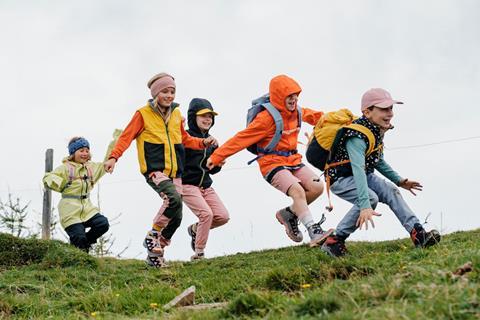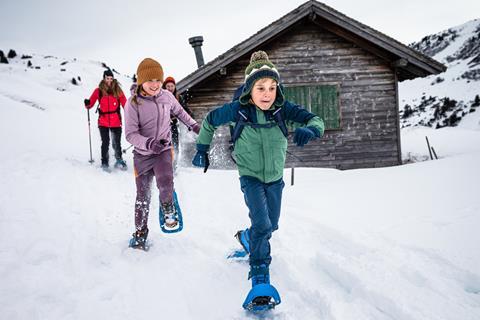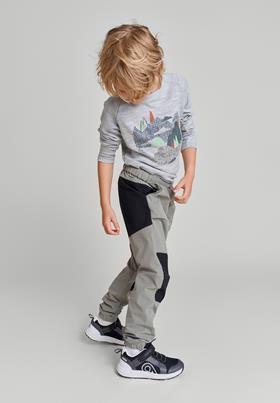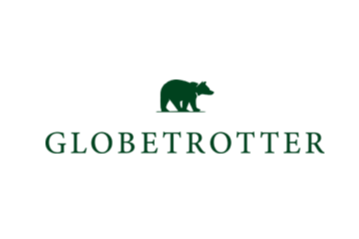People with children are generally no strangers to using secondhand items. Whether it’s quickly outgrown clothing exchanged between families and friends, or a still-in-good-condition pram bought online, pre-loved is often the way to go. But high-quality and sustainable outdoor clothing for children, even secondhand, remains expensive. And it only fits for a short time, sometimes lasting no more than a season.
So how can brands give families more use from children’s outdoor products? And why does it matter? Sustainably oriented outdoor brands are now thinking about the topics of second life and durability so that children’s clothing does not end up in the charity bin prematurely. We bring you seven measures outdoor brands are trying out, to extend the useful life of their children’s clothing.

1. Cooperate with second-hand suppliers or launch your own second-hand stores
High-quality outdoor clothing for children is designed for heavy use and is therefore ideal for resale. To ensure that parents do not shy away from investing in key items – and to support more sustainable consumption – some brands are now committed to reselling their clothes themselves, by entering into collaborations with secondhand suppliers.
Finnish children’s specialist Reima has linked its own app to Emmy, the largest secondhand platform in its home market, to encourage customers to buy secondhand. In 2015, Vaude also launched the Vaude Second Use Shop together with Ebay, where customers can trade in used Vaude products. Vaude plans to launch its own secondhand store soon. “We think we will be able to start selling used, repaired textiles at the beginning of next year,” reveals Jan Lorch, Chief Sustainability Officer at Vaude.
Not a subscriber yet?
Dive deeper into the sporting goods industry with the latest insights and stories – straight to your inbox!
The Swiss children’s brand Namuk has had a “re-use” shop since 2021. Says Melanie Gath from Namuk: “Customers can send their used Namuk clothing back to us and get 20 percent of the new price for it. In the future, we will also expand this offering to the European and US markets.”
More and more retailers are also building up a secondhand range – from Decathlon, REI and Bergzeit and Globetrotter to small specialist retailers such as Sport Conrad from Garmisch-Partenkirchen, which organizes secondhand sales under the name Nomoi.
One visible sign that brands are thinking about the further use of their children’s clothing? Sewn-in name tags with space for several names.
-> Read more on starting secondhand business model: How to price for resale: Insights from Globetrotter and 2nd Peak
2. Start a rental business model
Rental clothing solutions are slow to develop. Although brands such as Houdini and Vaude or retailers such as Globetrotter and Decathlon have already set up a rental business model, these are mainly limited to equipment and clothing for adults. But the rental idea is ideal for children, especially for specific outdoor activities or seasonal vacations.
Namuk already offers a rental service for children’s clothing through hotels and other partners such as Cirkelsupply in Switzerland. “Rent[al] is aimed primarily at winter tourists who are on a week’s skiing holiday and don’t want to buy a completely new ski outfit for their kids,” explains Gath of Namuk. “We plan to offer this service ourselves in the future.”
The German outdoor retailer Dropkid from Dresden, the US retailer Mountain Threads from Colorado or the French rental specialist Ski-Chic all thought about renting children’s clothing from the very beginning. “A lot of our customers just don’t go skiing often and don’t want to buy expensive outfits for the whole family, or they’re just passing through and don’t have anything to ski with them,” says Ski-Chic Co-founder Jordan Valentin. He therefore sees Ski-Chic’s offerings as, above all else, a service that opens up new target groups for the sport. Orders are placed online and delivered directly to hotels in around 50 ski resorts in France.
-> Find more information on setting up a rental business model here: Circular value chain? Don’t forget the consumer
3. Educate consumers about proper product care
Clothing wears out not only because of active use, but also because it has not been correctly cleaned or cared for. Especially with functional outdoor products, the right care can extend service life, meaning preloved items can continue to circulate among users on the resale market. Gore-Tex products are a prominent example of this, and also of the actions brands can take.
For many years, product care has been one of the top topics in Gore customer service and it is not losing its relevance. On the contrary, Gore is stepping up its commitment: Last year, Gore launched the Gore Gear Tour, a marketing and education campaign that tours various countries and cities to offer customers tips on product care and repairs at participating retailers.
Suppliers of children’s clothing, such as Reima, Namuk and Vaude also regularly communicate actively on the subject of product care. The same applies to retailers: “We make sure to advise customers on the sales floor on how to properly care for the goods in order to extend their service life,” explains Elisabeth Annaberger, Buyer for the Children’s Collection at Sport Conrad in Garmisch-Partenkirchen. “Many customers know little about the correct washing and care of products with membranes – for example, that washing too rarely can lead to delamination.”

4. Use multifunctional (and gender) neutral design
Sporting and outdoor companies can extend the useful life of children’s clothing if the design is less subject to fashion trends. “In the children’s segment, we try to use colors that last as long as possible, i.e., are less trend-oriented,” explains Anja Wielath, Product Manager Family at Vaude.
Trend colors or patterns quickly look old when fashion changes. Classic color variations like blue, red or green, on the other hand, do not go out of fashion so quickly and can be worn longer. Neutral shades are not only easier to resell, but because they are gender-neutral, they are also easier to give a secondlife to, even within siblings – whether boy or girl.
It is also important to have a multifunctional design so that the products can be as versatile as possible. At Namuk, jackets are designed to be suitable for skiing and everyday wear. “With Namuk, a child can get through the whole year with just two jackets,” says Gath.
5. Design products that grow with a child
Children grow rapidly, especially their arms and legs. That is why some brands have sewn reserves of fabric into clothes. Extendable trouser hems are the classic, but this is often not suitable for technical clothing, like ski pants, due to elastic cuffs and edge protection. Instead, a few centimeters of the outer and inner fabric are cinched and stitched. When your child grows, you can simply unpick the seam, extending the length of the arm or leg. Patagonia calls this construction, for example, the Grow-Fit function.
Patagonia also uses elastic cuffs on sleeves and hems as an “intuitive grow fit function” because they can be easily and permanently folded. An elastic band at the waist or an adjustable waistband also adapt to the growth of a child and are deliberately chosen by many manufacturers so that customers can use the products for as long as possible before reselling.
-> Find more information on how to design for a circular economy: Circular design thinking: Design beats disposal
6. Durable, long-lasting materials and technologies
Children do not always pay attention to whether clothes can withstand their activities. Knees, buttocks and trouser hems in particular are subject to heavy stress. Reima therefore only uses particularly abrasion-resistant fabrics that achieve high Martindale values. When Namuk introduces a new material, it is tested for durability and longevity for a long time. Only after successfully passing tests is a product developed from it.
Martindale Values Explained:
Martindale values are a key measurement used to assess the abrasion resistance of fabrics, particularly in the context of textiles used in outdoor and sporting clothing. These values provide valuable information about how well a fabric can withstand wear and tear, making them crucial for durable and long-lasting clothing.

In essence, Martindale values indicate the fabric’s ability to endure friction and repeated contact with external forces, such as rubbing against surfaces or equipment during outdoor activities. The higher the Martindale value, the more resistant the fabric is to abrasion, which means it is less likely to wear out quickly.
For children’s outdoor clothing, where active play and exploration are common, selecting fabrics with high Martindale values is essential. It ensures that the clothing can withstand the demands of outdoor adventures, making it a smart choice for both durability and sustainability.
By considering Martindale values in the design and material selection process, brands can offer products that stand up to the rigors of outdoor play, ultimately contributing to longer product lifespans and a more sustainable approach to children’s clothing.
Retailers also pay attention to durability. “For example, we look at how robust the zippers are. We also think it’s great, for example, that Vaude reinforces heavily stressed areas such as the knees and buttocks in children’s clothing – this is especially important for the very young and significantly extends the life of the clothing,” explains Annaberger of Sport Conrad.
7. Offer repair service and think about repairability
Even the best-designed children’s clothing can fall prey to the odd tear or hole. To ensure that outdoor clothing can remain in use longer, more and more brands are offering repair kits or their own repair service. Reima, for example, cooperates with a repair partner in Finland, and in other markets, customers can order repair kits in the online store. Namuk from Switzerland has so far also relied on repair partners, but soon wants to offer this service in-house because demand is increasing.
Lorch from Vaude has also noticed this: “We have been offering a repair service for 40 years and see that it is being used more and more, and the willingness to do so is growing significantly.” In addition to its in-house repair workshop, Vaude cooperates with repair services such as ifixit or Repair Cafés so that customers can repair minor defects themselves. A comprehensive range of spare parts can also be easily ordered via the Vaude web shop.
But Vaude is going one step further. In 2020, Vaude developed a repair index that consistently considers and systematically evaluates the repairability of all Vaude products as early as the design stage and throughout product development. A scoring system is used to check which levers exist in the areas of design, material selection and processing technologies in order to improve repairability. Conflicts of objectives arise again and again: For example, waterproof zippers have a great function, but are difficult to repair. Therefore, new processing technologies are also being tried, which save time in repairs.
-> More on repair: Challenges that brands face on their road to repair and how to overcome them
Three more reasons…
And if all this wasn’t enough to convince you why it pays for your company to start making kids’ outdoor and sporting clothes last longer, here are three more reasons:
Topics
- Bergzeit
- Circular Design
- Circular Economy
- Circular Economy
- Circularity
- Cirkelsupply
- CSR & Sustainability
- Decathlon
- Dropkid
- eBay
- Emmy
- Globetrotter
- Gore-Tex
- Martindale Values
- Mountain Threads
- Namuk
- Nomoi
- Patagonia
- Re:Thinking Business
- REI
- Reima
- Repair service
- Resale
- Second Life
- secondhand
- SGI Original
- Ski-Chic
- Sport Conrad
- Vaude








